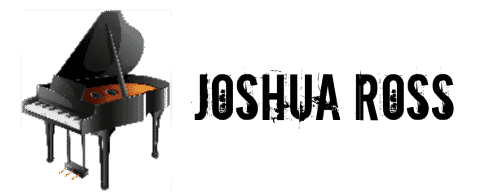As an Amazon Associate I earn from qualifying purchases.
Traditionally pianists have always taken piano lessons to better their playing. For some, lessons can get quite expensive; this is how much piano lessons typically cost. Knowing how to teach yourself piano can not only save you a lot of money, but it’s actually quite doable.
Below are 15 tips for how to teach yourself piano.
- Choose A Style And Stick To It
- Choose The Right Lesson Books
- Learn How To Read Notation First
- Start Off With Easy Music
- Study Basic Music Theory
- Identify Musical Patterns And Scales
- Play Hands Separately
- Study YouTube Videos
- Take An Online Piano Course
- Buy A Keyboard With Lesson Features
- Create A Practice Routine
- Record Your Practice And Take Notes
- Attend A Piano Recital
- Perform For People
- Take Piano Lessons Periodically
Want to Learn Piano?Click Here

Each of these tips can be applied to both children and adult pianists. Next, I’ll dive into each of these methods and describe how you can use them to teach yourself how to play piano the right way. Before you do anything, you first need to know what kind of piano player you want to be.
1. Choose A Style And Stick To It
Not everyone wants to be a classically trained pianist. Some prospective pianists just want to be able to play a few show tunes or hold down chords to sing along to instead of a Chopin sonata.
Besides, there are many different styles of piano playing and we all have different interests. Here are a few of the most popular piano styles to play.
- Classical
- Jazz
- Funk
- Rock
- Pop
- Broadway/Theater
- Gospel
When you’re deciding to learn the piano on your own, knowing what kind of style you wish to learn is important. This is because each style of playing has its own level of study to become proficient at.
I still think that whichever style you go with, its still a good idea to implement some classical piano principles.
Most classical pianists are equally trained in every bit of technique, note reading, harmonic interpretation, and well versed in different eras of musical compositions. Not only can they play Bach, but they’ll have the ability to shift to the jazzy chords of Gershwins Rhapsody In Blue.
Those who are classically trained also have fantastic sight reading and aural skills; skills that definitely help when playing other styles like Contemporary, Jazz and Gospel.
Most importantly, classical pianists rely heavily on musical notation, a skill that you need to be proficient at other styles of playing. It’s much easier for a classical pianist to transition to another style than the other way around.
Take a moment to think about what kind of piano playing you would like to accomplish. Also, consider studying classically alongside for the best results when teaching yourself.
2. Choose The Right Piano Lesson Books
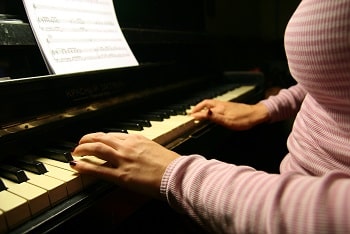
When you’ve decided what kind of style you want to learn, it’s time to get some learning material. Piano method books like the ones I mention here are the best way to teach yourself.
If you had a piano teacher they would most certainly have you studying from one of these anyway. Teachers use these books because it helps guide their students through all of the musical concepts rather than flooding them with tons of repertoire they cannot play yet.
Method books are clearly laid out with each new skill in a logical order. Many books like the Music Tree are broken down into learning units; each teaching a new concept to be used in the pieces that follow.
This allows pianists and teachers to focus on one concept at a time, perfecting the skill before adding on another layer.
When teaching yourself out of a piano method book, it’s important to have good pacing. Some method books move faster than others, which is why Adult pianists have different books than children.
Adult pianists are able to reason a little quicker, so their method books tend to offer more information per unit. The Piano Jumpstart course is an example of a good adult piano method, and it’s quite affordable. Get more information on the course here.
Having a good understanding of what concepts are being taught instead of trying to play through every piece quickly is the way to succeed here. For example, in the Music Tree books, each style of playing the piano is gradually introduced to you instead of all at once.
The book starts with notes off of the staff not just so that you can play a piece easily, but for the sole purpose of helping you develop early rhythm and coordination. As time moves on partial staff is introduced as well as articulations and dynamics.
Another example from the Francis Clark books is the gradual introduction of intervals starting with seconds, followed by thirds, fourths, fifths and etc. Whatever method book you choose, it needs to be clearly laid out so that you can work on a specific skill each time you practice.
If you want to just learn more piece, then I recommend adding in supplemental pieces to your playing. Be careful to make sure the music lines up with concepts and skills that you currently know so that you will not be overwhelmed.
3. Learn How To Read Notation First
Reading notation is crucial when it comes to piano playing. It’s something that needs to be done early on. This is more than just knowing where the notes are by looking at the keys. By this, I mean reading sheet music and understanding how the grand staff works!
A basic way to do this is to learn where middle C, bass F, and treble G are located. All of these notes are located a fifth interval from each other which makes them easy to memorize.
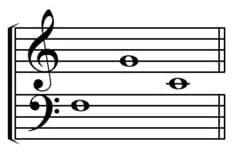
Being able to locate those three notes on the staff makes it much easier to find the rest of the notes in a section of music. It’s also a crucial skill when you’re trying to learn how to memorize piano notes faster.
All of the method books I mention here teach how to read music notation. Another method I’ve used to great success is flashcards. Think of it like studying for an exam. The note is listed on one side of the card on the grand staff.
On the back side of the card is a picture of where the note is located on the piano along with the note name. Using flashcards each time you practice is a quick way to train your brain and eyes to quickly memorize where those notes can be found.
The quicker you memorize where the notes are on the staff, the quicker you’ll be able to play more complicated pieces. I find that not knowing where the notes are located is what slows down most students when they are trying to play a piece.
4. Start Off With Easy Music
The excitement of playing the piano is definitely understandable. However just because you’re teaching yourself doesn’t mean you should bite off the toughest pieces ever written.
Instead start your piano learning journey with easy classical piano pieces like these, or with the material in the method books. Once you’ve got a decent grip on reading notes and how to put a piece together, then you can start adding in more challenging pieces.
Learning how to play the piano is all about pacing. Learning too quickly can actually harm your development. The approach should be slow and steady and with a minimal amount of mistakes.
5. Study Basic Music Theory
Placing your hands on the keys, knowing how high to sit at the piano, reading musical notation and pedaling are all important parts of piano playing. Still, a basic knowledge of music theory is absolutely crucial as your playing advances.
For a beginner student, just knowing the basics is enough. You’ll want to focus on articulations, dynamics, harmonies, and musical form. These are things you will be using consistently in your music from the very beginning, and every method book teaches these.
With articulations, executing those the correct way really has an impact on how a piece sounds.
For example, if you have a two-note slur followed by a staccato, it should be explicitly played this way. Doing it otherwise will completely change the character of the piece.
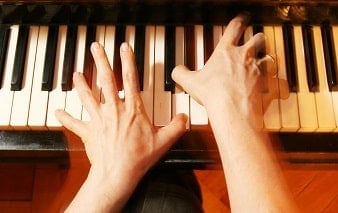
Articulations are there for a reason and should not be ignored, especially as you start to experiment with different musical styles.
Dynamics are important because they help tell the story behind the piece. Pianists should develop a touch for each dynamic level.
When it comes to piano, mezzo piano, pianissimo and mezzo forte, and forte, there needs to be a clear distinction there. Working on your touch each day will help you become a more creative musician.
Next comes the harmonic analysis of a piece. I’m not suggesting you do a pitch wheel analysis on the pieces you’re playing, but having a basic understanding of perfect authentic cadences and how a chord is structured is really important.
This can help you anticipate which notes are coming next and greatly aid with memory and sight-reading at the piano.
Lastly, the other important aspect music theory is musical form. When pianists can understand the complete structure of a piece, they have a better chance of learning it. The first thing I have my young students do is break down the entire piece from start to finish.
They label all of the sections that start and end the same. They also label the differences between certain passages of music and compare them.
When they study a piece, they are given specific sections to work on rather than taking on the entire piece from top to bottom. Learning a piece this way speeds up the learning process.
This may seem tricky at first if you don’t already know how to play the piano. Many of the method books come with supplemental activities books. In those books, you will sometimes see a complete breakdown of a piece that describes everything I shared here.
Take the time to study and work through those activities in addition to playing the repertoire in the main book.
You can also get some excellent music theory training through YouTube. Simply search for specific questions or demonstrations of something that you do not understand. Over time your theory skills will improve to the point that it’ll be second nature to your playing.
6. Identify Musical Patterns And Scales
Most music that you hear is made up of a certain reoccurring pattern or set of patterns. When you do basic music theory analysis on those pieces, those patterns will stick out much more easily.
As you recognize the pattern you can better put together the form of the piece and form a plan of action for teaching yourself how to play it.
I encourage you to spend a great deal of time learning not just the musical notation, but scales as well.
Most pieces are made up of a combination of scalar passages and harmonies. The more familiar you are with those scales, the better fingering you will develop. Here’s how to learn music scales the easy way.
This makes approaching pieces that much easier, and you’ll be able to teach yourself how to play them much faster because you already recognize those patterns.
7. Play Hands Separately
When first starting out at the piano, it’s a good idea to play hands separately. Playing one hand at a time eliminates the thought process of having to coordinate both sets of fingers.
Start off with a short piece of music or an easy classical piano song like one of the ones I mention here. Play through a few of the measures slowly, and then play the same passage with your other hand.
When you feel comfortable, start adding in both hands together at a slow and steady pace. Aim to increase the speed with each practice session. Go through the same process of hands separate at the faster speed, and then put them together.
Going through this process a few times will eventually lead to you playing that entire section up to speed, with evenness and accuracy.
For some beginners, it makes more sense to take the notes out of the occasion.
The method I use for my kids is called “shadow” playing or “ghost” playing. This process involves playing through short passages of music, except on the piano fallboard or on a table.
You can do this hands separately as well, but the overall goal is to keep the eyes upon the music and to feel the proper fingering. Since the notes are taken out of the equation all of the focus goes to lining up the fingers and rhythms before adding in pitch. Read more about this practice strategy here.
8. Study YouTube Videos
YouTube is a great resource for learning how to play specific songs on the piano. I think it’ s a useful tool if you’re looking for supplemental material to go along with your method books, or just want to change up your piano study every so often.
Many videos like this one will use a drop-down keyboard and synesthesia to teach people how to play the piano.
While this is an interesting and fun way to learn, it does not do anything for understanding the basics of how to play the piano. At most, all these videos teach you is how to play that specific piece and nothing else beyond that.
For some people that’s satisfactory, but by no means is that learning how to play the piano as a whole. In fact, most people who watch these videos cannot name the letter names of those notes nor read sheet music.
In essence, no concepts are learned here either, which is why learning from a method book, and understanding how to read notation and the theory behind the music is important.
Once all of those skills are trained well, then I recommend watching some of the popular YouTube videos out there for piano songs. What’s happening will make more sense to you, and by that point, you’ll be able to notate the videos yourself on staff paper.
This way you can always play the piece, add or remove notes, and customize it the way you would like on your own.
9. Take An Online Piano Course
It may be a good idea to take a step beyond YouTube and take an online piano course. There’s always been a debate between online piano lessons and in person, but online courses, in my opinion, work for busy individuals.
Most online piano courses like this one are set up like method books essentially. There is a module for each level of training. As you complete each task, a new module is unlocked to study from. The thing I like about these courses is that it allows you to pace yourself.
The downside of taking an online course is that there is not much supplemental material beyond the one time purchase. There is also not usually any support beyond returns and refunds.
The good news is that you can always rewatch the video lessons if there was something you were unclear on.
In general, the online courses will sometimes offer ongoing memberships so that you can always have access to their expanding library of music lessons and material.
10. Buy A Keyboard With Lesson Features
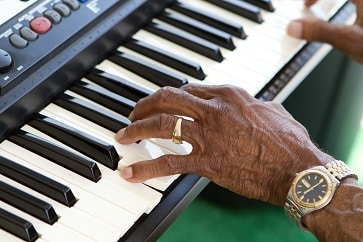
Some of the best piano keyboards for beginners have lesson teaching features installed in them. The keyboard will basically show you how to play a tune using light up keys or another method.
Because of today’s technology, these keyboards can actually sync up with sheet music apps on your smartphone or tablet and teach you how to play those pieces.
While it’s not the most refined way to learn piano, it’s definitely a step above watching YouTube videos of colorful notes dropping.
Using sheet music apps with a digital keyboard allows you to put add in the element of notation. You can control the pacing and difficulty of the lessons as well. Most of the apps have an enormous catalog of sheet music to choose from.
Everything from Classical, Jazz, Rock, and Pop styles can be found in those databases. If you’re wanting a bit of guidance while trying to teach yourself how to play piano, then a digital keyboard with these kinds of features will definitely be worth it.
11. Create A Practice Routine
If you want to succeed at the piano, then you need to practice as much as possible. I would set up a practice schedule similar to this one. With something like this, you can break down every aspect from start to finish.
Choose what pieces or techniques you want to warm up with, pick a couple of concepts to review, and then dive into your new repertoire.
The best thing you can do for your playing is to stay consistent. Most people who struggle to learn the piano either on their own or with an instructor give up too early.
Not every student takes off quickly with the piano, but it’s okay to take a slow approach to learn the instrument.
If you’re an adult student, I would make it a goal to learn and perfect one new unit or concept per week. This way when you move on to new material, you’ll still have a firm grip on the freshly learned concepts as well.
As you advance, you can start teaching yourself how to play more and more.
12. Record Your Practice And Take Notes
The best way to self assess your playing is to record yourself. This doesn’t have to be anything super fancy, a simple smartphone microphone will do. Video cameras work best though because you can actually watch yourself play.
When watching recordings of your practice session, here are a few things to look for.
- Sitting posture
- Hand position
- Note accuracy
- Finger accuracy
- Dynamics and tone
- Tempo
Without a teacher watching you, it’s very easy to sit at the piano with poor posture. Watching a video can help you recognize that and correct it. The same can be said for hand positioning.
Something I listen for in my recordings is the accuracy of my playing, dynamics, and tone. In the middle of playing it’s easy to get distracted and not hear some of the notes you actually missed.
The same can be said with playing notes with the wrong fingering, or not having enough dynamic contrast in certain passages. Tempo is also important as we tend to rush because of adrenaline during a performance.
13. Attend A Piano Recital
Watching a professional at work can give you some good insight into playing the piano. This is why it’s a good idea to attend a piano recital.
It’s in this space where you can see how a performer approaches different articulations, how they use the pedal and create different dynamics in performance. You can also study their posture and body movements during a piece.
Not only is this a great learning moment, but it’s also inspiring. Whether your genre of interest is Classical or Jazz, you can gain a lot of perspective from going to a live performance.
14. Perform For People
You can learn a lot about your playing by performing for others. This doesn’t have to be in front of a huge audience but in front of friends and family.
After performing ask them to critique your playing. This will give them a chance to share valuable feedback.
If you aspire to perform on a larger scale, then doing smaller performances is the best way to train yourself up for those bigger moments.
15. Take Piano Lessons Periodically
Even if you’re teaching yourself, it always helps to have someone look over your progress. Consider taking a piano lesson every now and then for some tips and guidance. You will pay a small fee for the consultation, but at least you will not be roped into a monthly or yearly piano program.
There’s a wealth of information that piano teachers can share with you in just one lesson. You can find a good teacher by following these tips.
Hello & thanks for stopping by! I’m a professional concert pianist and piano instructor. In the United States, I’ve given successful performances in several places including New York, Florida, Connecticut, & New Jersey, I have also performed internationally in Italy and made my Carnegie Hall debut in 2014. I enjoy blogging about the piano, the art of performance, general music, current events and the latest in music production.
